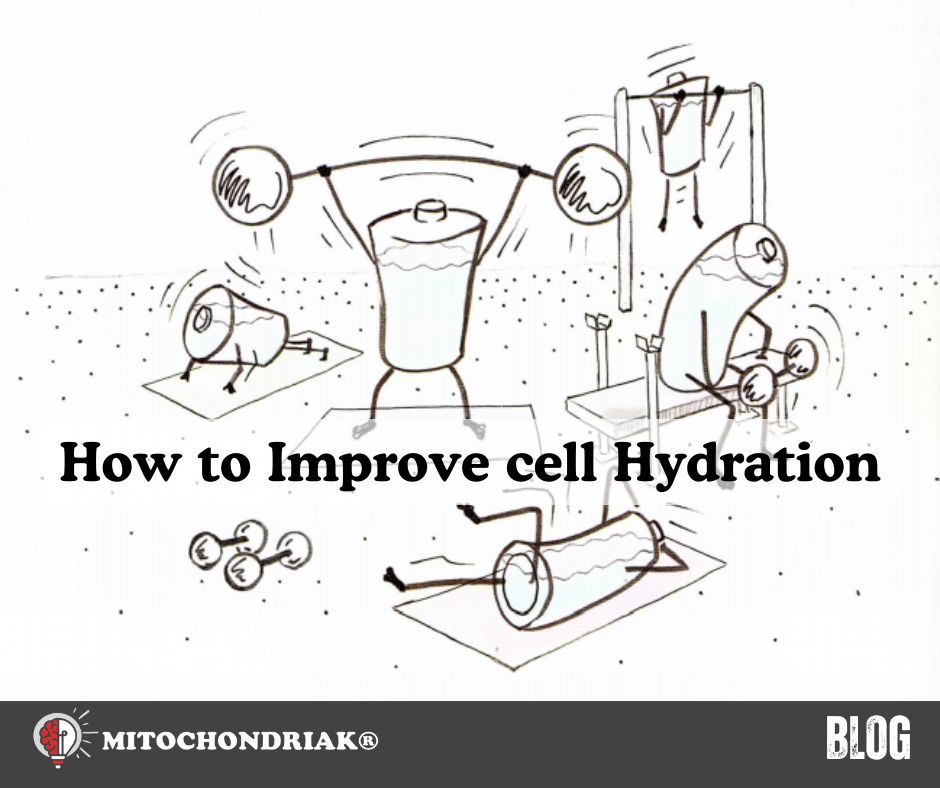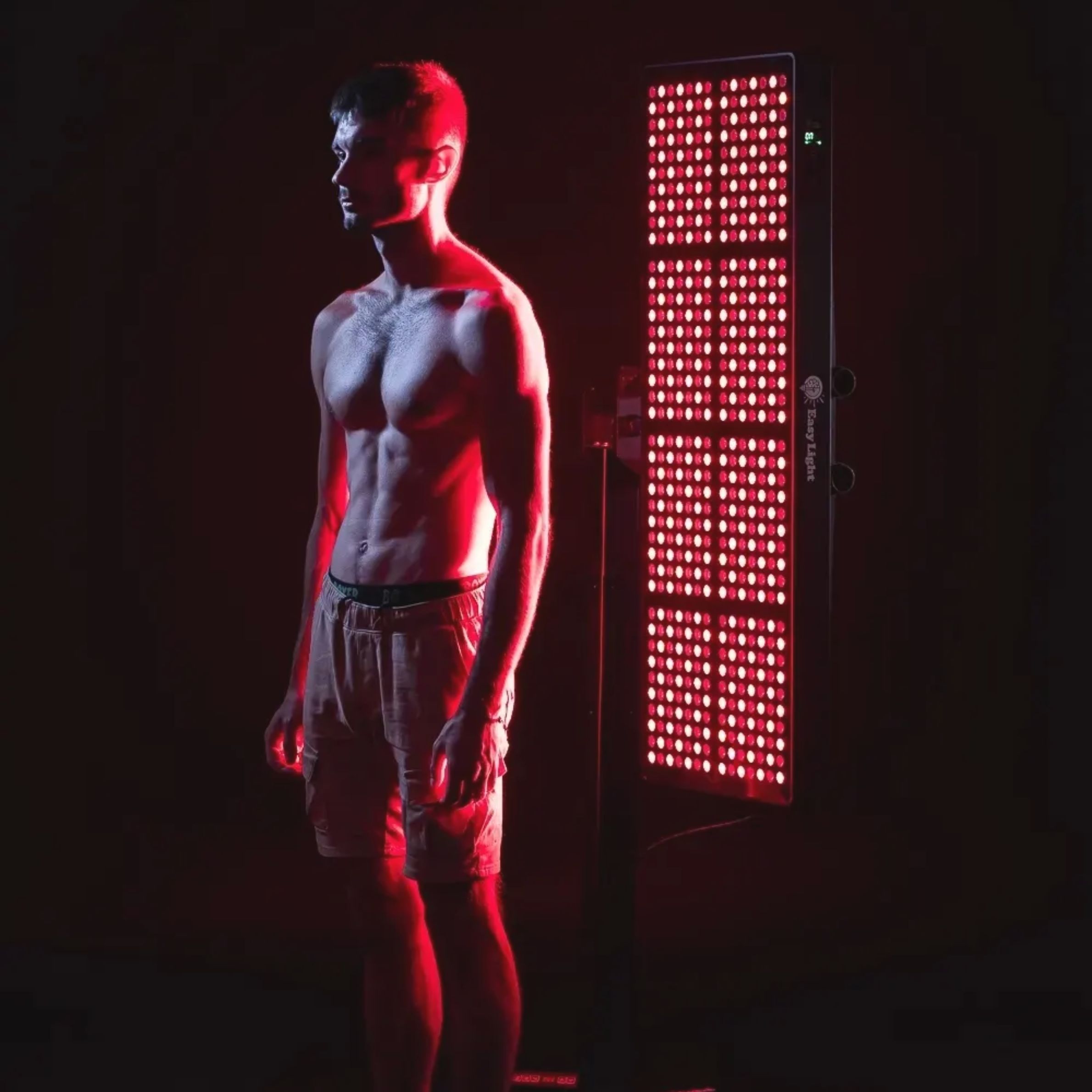5 Tips to Improve cell Hydration
Did you know that our hydration is not only about the amount of water we drink? The water in us is actually a bit special, because it passes through our cells and mitochondria, which not only filter it but even organize it. This is called the exclusion zone or the fourth phase of water. Today we’ll look at what internal hydration looks like, how to care for it, and how to improve it with a few simple tips.

Article outline:
- How drinking regime relates to internal hydration
- What is the exclusion zone aka the fourth phase of water?
- Grounding and red light as the basis of good hydration
- 5 Tips to improve internal hydration
How drinking regime relates to internal hydration
When you hear the word "hydration", most people imagine a glass of water, a drinking schedule, or a bottle they carry to work. All this is true to a certain extent, because we need to drink, but the truth goes a little deeper – literally down to the cellular level. The water we drink does not necessarily mean that our cells are truly hydrated.
The water inside us fills our cells and keeps our skin firm and supple without wrinkles, and comes mainly from mitochondria and tends to “organize” itself. This organization is now a scientifically proven fact and is known as the fourth phase of water or, in slang, the "exclusion zone" (short: EZ), a term coined by water researcher Dr. Gerald Pollack from the University of Washington.
What is the exclusion zone aka the fourth phase of water
Most of the water in our bodies is not ordinary "liquid water", like the kind we pour from the tap, but a specially structured arrangement known as the exclusion zone or fourth phase of water. For such water to form in us, a few simple conditions must be met:
- The water must be close to proteins (that’s why it’s important to get enough protein and collagen).
- Our body and cells need enough electrons (that’s why grounding, movement, etc., are important)
- Our body needs enough red and infrared light.
This is exactly where the key difference lies between water we drink and the water that hydrates our cells. Water in the body is filtered through mitochondria, where so-called metabolic water is created – the purest form of internal hydration, which immediately goes where it is needed. In the microscope video below, you can even see it (notice how everything is pushed away from the left edge. This is how the exclusion zone forms and also helps us detoxify).
What all influences internal hydration?
In order to form this structured water, mitochondria must produce enough ATP (energy), be exposed to red and infrared light, have enough electrons (for example from the earth – grounding), and, of course, not forget quality food with enough protein and high-quality omega-3 fatty acids (especially DHA). As you can see – it’s not enough to just “drink a lot”; it’s important to see hydration as a biophysical phenomenon. That’s exactly how every "Mitochondriak" does it.
5 Tips to improve internal hydration
We’ve prepared simple and practical tips for you that you can implement right away to improve not only your energy and health, but even your skin and wrinkles.
- Morning sunlight (rich in red and infrared light)
In the morning, during the first hour after sunrise, there is no UV and the red and infrared spectrum dominates. This light charges the water in your cells and increases the EZ zone. If you go for a morning walk outside in the sun, ideally grounded and expose your chest or back to the light, you’ll support ATP production and the formation of structured water. Bonus? Your circadian rhythm improves, as well as your melatonin and sleep. - Grounding – connection with the earth
Walking barefoot on grass, damp earth or sand helps supply electrons to the body, which increase the hydrophilicity of proteins and support the formation of the exclusion zone. If you’re also in the sun at the same time, the effects multiply. - Evening red light (sunset)
Sunset is another excellent source of red light. The same rule applies as at sunrise – about an hour before sunset there is no UV and red and infrared dominate. In addition, it helps the body to “switch off” and get ready for regeneration. Evening light increases the EZ zone, supports detox and helps repair cells during the night. - Quality proteins and omega-3 fatty acids (DHA)
EZ water is formed on hydrophilic (water-attracting) surfaces – especially proteins. If your body can’t make proteins, it can’t make structured water. DHA from fish or eggs also increases the electrical capacity of cell membranes, which directly affects EZ formation. - Enough UV light (and thus vitamin D)
While UV light itself does not create EZ water, research shows that after previous exposure to red light, UV rays further expand this zone. In addition, UV supports the synthesis of vitamin D, which regulates hundreds of genes, including those involved in hydration.
BONUS TIP
Remember that internal hydration is not just about how much water you drink. It’s about how your body transforms, organizes, and electrically charges that water. For that, you need healthy mitochondria, electrons, and the right light.
Outdoors, in nature and in the sun, you get everything for free. For those looking for an extra boost, you can use Mitochondriak devices (newly also Mitochondriak devices with UVB light, which help with vitamin D production) and also grounded barefoot shoes – so you can be “barefoot” on your morning walk, even with shoes on!
Tip for you: Not sure which Mitochondriak® product to choose? Let’s find out with our simple guide.
References and studies used:
- https://www.pollacklab.org/research
- Gerald Pollack book – The Fourth Phase of Water: Beyond Solid, Liquid, and Vapor
- Gerald H. Pollack, Cells, Gels and the Engines of Life, June 2003 Journal of Pharmacy and Pharmacology 55(6):857–858, DOI:10.1211/002235703765951483
.png)

.jpg)
.jpg)